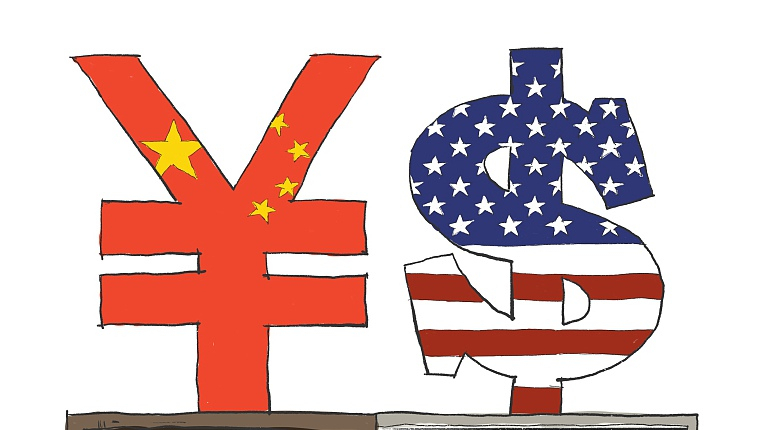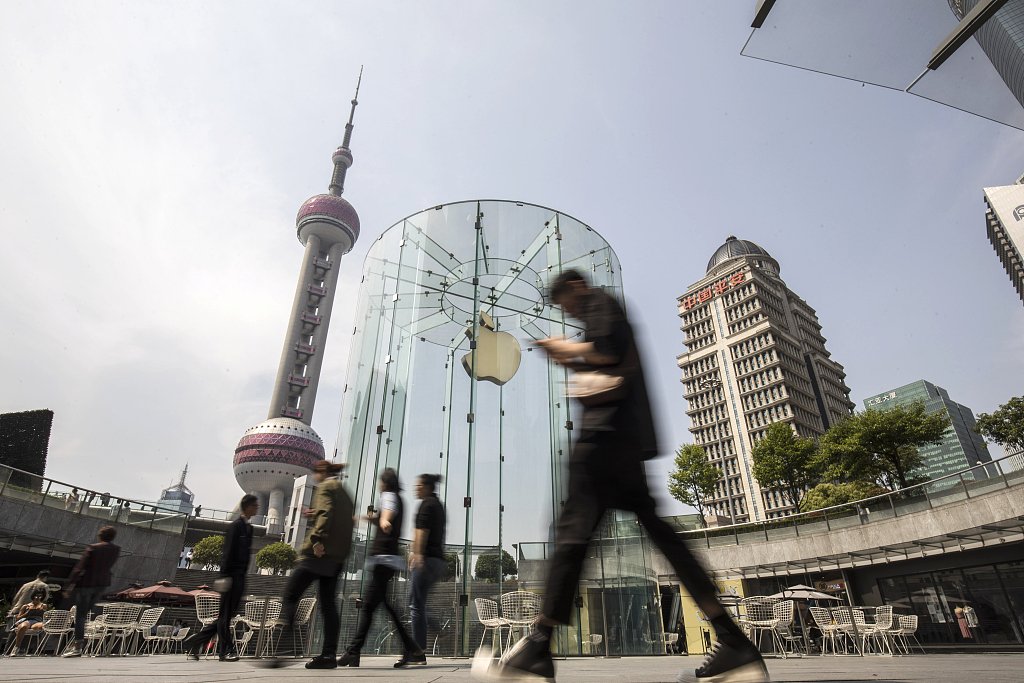
Opinion
11:03, 18-May-2019
Why the trade war cannot deter China’s rise
Updated
13:41, 19-May-2019
Ken Moak

Editor's Note: Ken Moak, who taught economic theory, public policy and globalization at the university level for 33 years, co-authored a book titled "China's Economic Rise and Its Global Impact" in 2015. The article reflects the author's opinion, and not necessarily the views of CGTN.
It would be an oversimplification to suggest that the U.S. politicians and officials did not know the trade war against China is reducing investment and consumption, putting farmers at financial risk, slowing down the economy and dragging the rest of the world with it. In this sense, the war and escalating it might have nothing to do with deficits or China's “unfair” trade practices.
The deficit figures are misleading due to the complex U.S.-China trade relationship, China being America's factory, market and export platform. The “unfair” trade practices charges that the US accused China of is based on questionable assumptions and information.
Still, Trump's trade war and its escalation are cheered on by the Congress. Trump's irrational policies, too, are increasingly supported by the American public, trade unions and businesses because they really believe China has been “eating America's lunch”, according to the latest Pew and Gallup polls.
The misplaced support might be due to the public's lack of understanding of the U.S.-China trade relationship, allowing politicians and officials to use the trade war as an excuse to stifle China's economic, technological and military rise.
The U.S.-China trade relationship
The U.S.-China relationship is not just one between a buyer and seller. China, in fact, is America's factory and market. That is, the majority of “Chinese imports”, from electronics to toys, are “Made by America in China”. Apple's iPhone is a good example: designed in America, parts produced in Asia and elsewhere and shipped to China for final assembly and “exported” to the U.S.

Chinese made jackets at a Manhattan department store in New York City, U.S., May 7, 2019. /VCG Photo
Chinese made jackets at a Manhattan department store in New York City, U.S., May 7, 2019. /VCG Photo
Upon arrival on U.S. shores, trade statistics measuring methodology is such that the product is valued at total factor costs which include those incurred in the U.S. and elsewhere. According to the U.S.-based journal, The Conversation, the Apple iPhone cost approximately 240 U.S. dollars (to produce from start to finish) of which China's share was only around 8.40 U.S. dollars. The remainder went to USA, Japan, Republic of Korea (ROK) and other nations. Indeed, the iPhone contributed to around 1.9 billion U.S. dollars to the U.S. deficit alone.
Moreover, much of the “Made in China but by the U.S.” products are sold in China's increasingly affluent market of 1.4 billion consumers. China is perhaps the most profitable market for Apple, General Motor and other U.S. enterprises outside of the U.S.
Tariffs have hurt U.S. economy just as much if not more than China's
Having to pay the tariffs and losing the lucrative China market, it is no surprise that the trade war has hurt the U.S. economy just as much if not more than China's. The International Monetary Fund (IMF) has revised China's economic growth upwards to 6.4 percent in 2019, but projected that of the U.S. falling to around 2.5 percent.
Further, China's tit-for-tat on 60 billion dollars of U.S. goods has sent shockwaves to global capital markets. The Dow Jones, S&P 500 and NASDAQ saw their biggest loss in years, losing around 2.3 percent, 2.5 percent and 3.4 percent of their values respectively.
China is right to counter the U.S. policies with tit-for-tat and other measures because the deficit figure is misleading and “unfair” trade practices charges against China is based on flawed information.
Trade deficit figures and charges are based on questionable information
In addition to the way the deficit is calculated, Trump conveniently ignores trade in services in which the U.S. enjoys a hefty surplus. And if the paranoid Congress allows “dual use” technology export to China, the U.S. might gain a surplus.
The U.S. “unfair” trade practices against China are also questionable at best. On currency manipulation, for example, neither the World Trade Organization nor the U.S. Treasury Department would label China as a currency manipulator because the country did not even fall into the America's three criteria invention – trade partner's surplus of least 20 billion U.S. dollars; U.S. deficit at least three percent of GDP; and trade partner deliberately spent two percent of GDP to buy U.S. dollars - for the “beggar thy neighbor” policy.

An Apple store in Shanghai, China, May 9, 2019. /VCG Photo
An Apple store in Shanghai, China, May 9, 2019. /VCG Photo
The “forced technology transfer” accusation is also flawed because it is a condition of doing business in China. It, in fact, makes financial sense for U.S. firms to transfer its technology to the Chinese partners they made a profit from doing so, in that the technology forms U.S. firms' capitalization. Moreover, incorporating U.S. technology with skilled Chinese labor would increases production efficiency and therefore profits.
It would not deter China's rise
In light of the aforementioned, the trade war should not have instituted in the first place. Escalating it would only worsen the U.S., Chinese and world economies.
Besides, China has the capacity to weather the trade war. Its increasingly affluent 1.4 billion consumer market could buy unbelievable quantities of goods and services, suggesting that they could absorb a big percent of exports destined to the U.S.
Further, more and more countries are joining China's Belt and Road Initiative (BRI). Two-way trade between China and the 80 participating countries has accumulated to over 6.5 trillion U.S. dollars between 2013 and 2018, according to Chinese government statistics.
A new study conducted by trade credit insurer Euler Hermes estimated that the BRI trade to grow by 117 billion U.S. dollars in 2019. China would import 61 billion U.S. dollars and export 56 billion U.S. dollars of merchandise. The BRI's ability to absorb Chinese exports is therefore not in doubt.
China's muscular monetary toolkit could cushion the economy from falling into a “hard landing” by U.S.-initiated trade war. Chinese banks' required reserve ratio (RRR) is the highest in the world, ranging between 12.5 percent and 14.5 percent, suggesting a one percentage point reduction could free up 116 billion U.S. dollars for new lending without harming the financial system, according to the People's Bank of China.
Short of an all-out war, the U.S. cannot stop China's rise. On the contrary, the anti-China stances appear to have strengthened the Asian giant even more, pouring in huge amounts of money on manufacturing innovation and weapons development and production.
(If you want to contribute and have specific expertise, please contact us at opinions@cgtn.com.)

SITEMAP
Copyright © 2018 CGTN. Beijing ICP prepared NO.16065310-3
Copyright © 2018 CGTN. Beijing ICP prepared NO.16065310-3